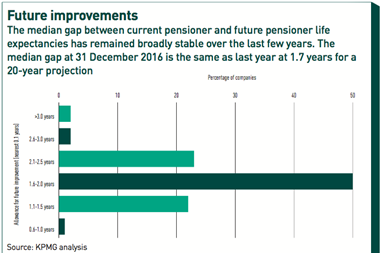The International Accounting Standards Board (IASB) looks set to impact pensions accounting under International Accounting Standard 19 (IAS 19), it has emerged.
Under the IASB’s Primary Financial Statements Project, one proposed change could see defined benefit (DB) plan sponsors no longer given a choice as to how they display net interest costs.
Speaking during a 21 June board meeting, project manager Rachel Knubley said: “In respect of the IAS 19 issue, what we are proposing to do would indeed result in a consequential amendment to remove the classification choice that people have at the moment.”
IAS 19 currently permits DB sponsors to choose how they present net-interest cost on the face of the company’s income statement.
The IASB is currently examining a staff proposal to require businesses to report an EBIT (earnings before finance income/expenses and tax) subtotal on income statements.
The issue forms part of the IASB’s “Better Communication” initiative to improve clarity in financial reporting.
The project could also mean that companies would have to separate out financing-related interest income from other types of interest income.
Any move would have an impact on pensions accounting. Since 2011, DB sponsors have been required to report a net-interest cost on income statements.
Meanwhile, it has emerged that the IASB will issue a discussion paper rather than a full exposure draft on its Primary Financial Statements Project.
IASB chairman Hans Hoogervorst said a discussion paper was “more likely”. Any such move would allow it to present alternative views and a wider ranger of options for public comment.
Speaking before the IASB chairman, Francoise Flores, former chair of the European Financial Reporting Advisory Group, said: “If we go to a [discussion paper], we can consider alternatives. If we go [out with] an exposure draft, we may want to have some outreach first on possible alternatives.”
Flores also urged the board to put in further work on alternative approaches to the thorny question of defining EBIT.
At the moment, the board is still assessing how it could structure an EBIT line item rather than deciding whether it would be productive to include it in the income statement.
At the board’s March meeting, the staff proposed defining EBIT as profit before finance income/expenses and tax. They defined finance income or expense as the income or expense flowing from an entity’s capital structure. Staff also proposed an entity’s capital structure would include cash held, as well as short-term investments of excess cash.
The board has asked the staff to refine this thinking, including the definition of capital structure.
The aims of the project are twofold. First, the board believes the inclusion of an EBIT subtotal will give users a comparable measure of pre-tax profit performance.
Second, they think it will allow users to compare entities with different capital structures.
The term ‘capital structure’ is not defined in International Financial Reporting Standards at present. Staff have adopted it as a working term for the purposes of this project.
The staff have recommended a principles-based definition of capital structure, although the board has yet to voice its preference. The board will resume its discussions on the project later this month.








No comments yet